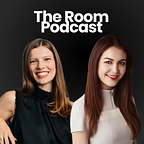In The Room with Graham Fortgang, Co-Owner of MatchaBar
Welcome to The Room Podcast! In our second epsiode of season five, Graham Fortgang, Co-Founder and Owner of MatchaBar, joins Madison and Claudia in the room to share his journey to founding his Brooklyn-based matcha tea company. MatchaBar’s mission is to bring matcha to the people whether through grocery stores, online shipping, or wholesale offerings. MatchaBar’s story begins in 2014 when Graham and his brother Max developed their own blend of ceremonial grade matcha and opened up America’s first matcha café.
This week’s episode explores insights and themes such as the thousand-year-old origins of matcha, the power of hustle in building a business, and tactical tips on being an omnichannel retailer in 2022. Let’s open the door.
….
Key Theme 1: The thousand-year-old origins of matcha
While matcha is now enjoyed all over the world as one of the most popular caffeine drinks, its history traces back to China in the 1200s. A Buddhist monk Eisai then brought macho, a green tea plant inherently, from China to Japan. In 1200, Eisai wrote a book about the magical healing properties, including longevity of life, fous, and increase in digestion, of matcha. Once the matcha seeds were introduced to Japan, the matcha tradition was indoctrinated by the Japanese wabi-sabi concept of life, with tea master Sen no Rikyū perfecting and popularizing matcha. Matcha and the processes around it represent a way of life, one that emphasized simplicity, rather than merely design. It was in this Japanese tradition that stressed matcha was to be enjoyed by everyone, while in China matcha was part of lavish ceremonies and tea rooms. Inspired by this tradition, Graham and his team aim to continue this tradition of bringing matcha to the people.
“And that’s where our mission of bringing much to the people actually comes from. We actually adapted his words into what our mission is we bow our head into that history, but then also realize, hey, like our job is to make this accessible.”
Watch Graham’s brother Max make matcha here.
Key Theme 2: The Power of Hustle in Building a Business
While MatchaBar started in cafés, their vision of making matcha accessible dovetailed into creating a ready to drink beverage for their customers. In creating MatchaBar as a CPG brand, Graham and his brother relied on the power of hustle and going through various outlets to sell the brand and product. They showed up at festivals, educational conferences, fashion events, music events, and more and had the goal of putting as many cold cans into hands as possible and creating that personable experience. MatchaBar’s first retail partner Whole Foods also came about by creative hustle.
“ we had a whole scheme going where my brother would go [into Whole Foods] two days before and say, Hey, if you ever any chance, do you have any matcha products? They’d be like, oh, what’s matcha?… and then I would show up two or three days later, like hey, I got this new matcha thing and you got to try it and they’d be like ah people are asking about it. That’s part of the New York hustle. You gotta be down to really grind and like sometimes create your own demand.”
Check out MatchaBar’s products, including their energy drinks and original iced matcha, offered at Whole Foods here.
Key Theme 3: Tactical Tips on being an Omnichannel Retailer in 2022
Graham emphasizes the importance of running a modern brand that doesn’t rely solely on one distribution channel; instead, multiple sources of revenue and more moldable channels gives security in an always changing world with the COVID-19 pandemic as the most obvious indication for the need to be an omnichannel retailer.
“In one day when we went into lockdown across the country, our grocery business, you know, was cut 33%. Just one day, you have no idea what’s going to happen. So I think that’s really the name of the game in the modern world and certainly being digitally friendly, a super important being sort of flexible is key to defensibility as just kind of the market and the environment’s changed so much.”
Graham and his team were lucky that they developed a D2C platform before COVID hit, but they had to learn to build an experience within their product. That means building a brand through SMS, email, blogs, recipes, original content on social platforms, influencers, affiliates, etc. A few technology products Graham and his team use are:
- Postscript for SMS
- Klaviyo for Email
- Okendo for Reviews
- Shopify Plus for Website and Checkout
…
Thank you so much for tuning into another episode of The Room Podcast with Madison and Claudia. You can hear this episode on Apple Podcasts and Spotify
We will be back next Tuesday, Feb. 1, with a brand new episode at 7AM PST/10 AM EST.
